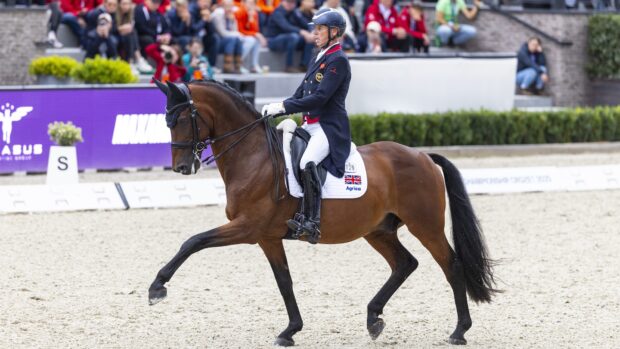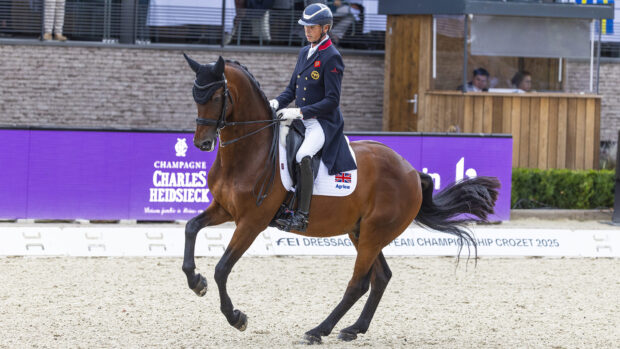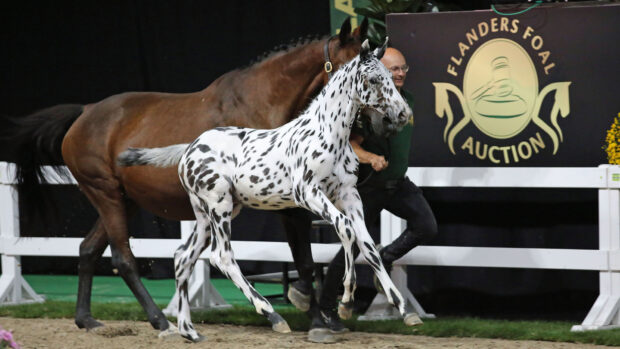With the FEI set to introduce a new set of dressage rules for 2024, that will be particularly significiant for CDI4* and CDI5*s, it can be quite hard to keep track of the difference between each CDI and what each abbreviation means.
For those in need of a refresher, or those who are completely new to the sport, we’ve compiled this guide to help keep you on track.
What does CDI mean in dressage?
CDI stands for Concours de Dressage International and is the competition classification for international dressage events recognised by the FEI.
CDIs are given star ratings, denoted by an asterisk, relating to the level of the competition and the perceived quality of the riders and horses participating, as well as the prize money on offer and the complexity of the tests performed.
Multiple CDI levels can also be run at the same event. Organisers often structure international competitions to accommodate various levels of rider and horse and to provide an inclusive platform for combinations to compete at an appropriate skill and experience level.
For instance, a CDI event might feature competitions for CDI1*, CDI3* and CDI5*, allowing riders and horses at different levels of their training to compete at the same venue.
This format is designed to promote the development of combinations as well as make the event more varied and engaging for spectators, offering a diverse range of performances to watch.
CDIs will typically take the name of the location or city where the event is being held and the star rating is to indicate the highest level of competition at the event.
CDI1*
CDI1* competitions include FEI prix st georges (PSG), intermediate I (inter 1) and inter 1 freestyle tests, otherwise known as the small tour.
There are no minimum qualification requirements for this level, and neither is there a minimum requirement for prize money. At this level, competitors may also use either a snaffle or double bridle.
CDI2*
A CDI2* includes inter A, inter B, inter II and inter A/B freestyle tests, which are known as the medium tour.
Again, there is no minimum qualification or prize money requirement for this level and riders may continue to choose between the snaffle and the double bridle.
CDI3*
CDI3*s see the introduction of the grand prix, the grand prix special and the grand prix freestyle, which is known as the big tour.
There are still no minimum qualifications or prize money requirements, but riders must use the double bridle from this level onwards.
Medium and small tour competitions can also be scheduled at CDI3*s.
CDI4*
CDI4* also includes the grand prix, the grand prix special and the grand prix freestyle.
Combinations must have achieved at least 63% in a grand prix or grand prix special at a CDI3* to compete at this level. CDI4*s must provide a minimum of 24,000 Swiss francs (CHF) in prize money.
Medium and small tour competitions can also be scheduled at CDI4*s.
CDI5*
CDI5*s are the highest level of competition and include the grand prix, the grand prix special and the grand prix freestyle.
Combinations must have achieved at least 65% in a grand prix or grand prix special at a CDI3* or CDI4* to compete at this level. CDI5*s must provide a minimum of 90,000 CHF in prize money.
Medium and small tour competitions can also be scheduled at CDI5*s.
What is a CDI-W?
As well as the star rating, a CDI can also be followed by an abbreviated code to categorise different dressage competitions.
A CDI-W indicates a qualifier for the FEI World Cup Dressage series is being held at this event. A CDI-W takes precedence over a star rating in the naming of an event, so a CDI-W can also include additional CDI levels at the same event.
CDI-Ws can also be followed by the abbreviations for the Western European League (WEL), Central European League (CEL), North American League (NAL) and Pacific League (PAL).
The FEI Dressage Nations Cup carries the CDIO abbreviation and can also include other CDI levels. CDIOs can also be organised at CDI1* to CDI5* level as well as in youth categories.
There are a range of further FEI dressage divisions categorised by age:
CDIY is for FEI young riders (Y) aged 16–21 and uses tests that are equivalent in difficulty to PSG. Young riders can use either a snaffle or a double bridle.
CDIJ is for FEI juniors (J) aged 14–18 and uses tests that are equivalent to British Dressage advanced medium tests. Juniors can use either a snaffle or double bridle.
CDIP is for pony riders (P) aged 12–16 and uses tests that are equivalent to British Dressage medium level. Pony riders must use a snaffle bridle.
CDICh is for children on horses (Ch) aged 12–14 and uses tests that are equivalent to British Dressage elementary tests. Children must also use a snaffle bridle.
CDIU25 is for riders aged 16–25 competing at inter II or grand prix level. At this level, riders are allowed to choose between a snaffle or double bridle if riding the inter II but must use a double for the grand prix.
CDIYH are international young horse classes divided into sections for five-year-olds, six-year-olds and seven-year-olds.
Para-dressage riders have their own FEI competitions, known as CPEDIs and have different classification levels based on functional ability.
Confusingly, abbreviations can also be mixed, for instance, a CDIOU25 would be an under-25s Nations Cup competition.
There are also CHIOs, which stand for Concours Hippique International Officiel. CHIOs are high-profile competitions that host several disciplines at the same event. The most well-known CHIOs include CHIO Aachen in Germany and CHIO Rotterdam in the Netherlands.
You might also be interested in:

Horse & Hound’s helpful guide to becoming a dressage judge

Fancy trying affiliated dressage, but not quite sure where to start? You need to read this…

Step into the spotlight: how to create a dressage freestyle without breaking the bank

‘We left the arena and careered around the judge’s car’ and 21 more dressage bloopers

Subscribe to Horse & Hound magazine today – and enjoy unlimited website access all year round
Horse & Hound magazine, out every Thursday, is packed with all the latest news and reports, as well as interviews, specials, nostalgia, vet and training advice. Find how you can enjoy the magazine delivered to your door every week, plus options to upgrade your subscription to access our online service that brings you breaking news and reports as well as other benefits.






